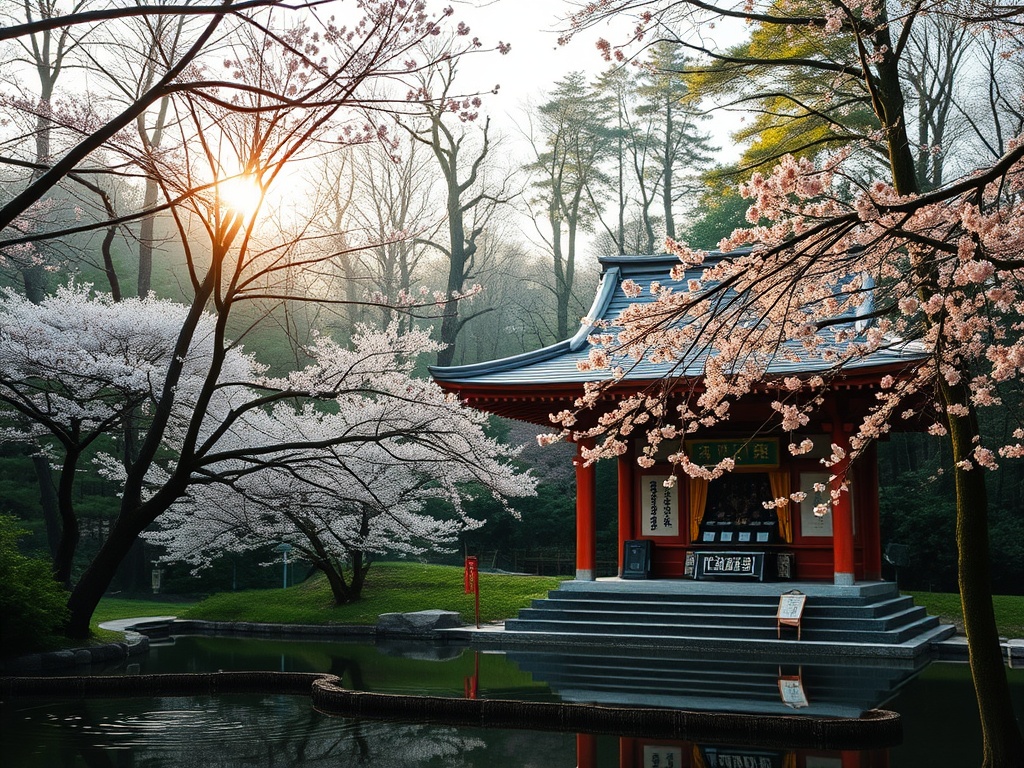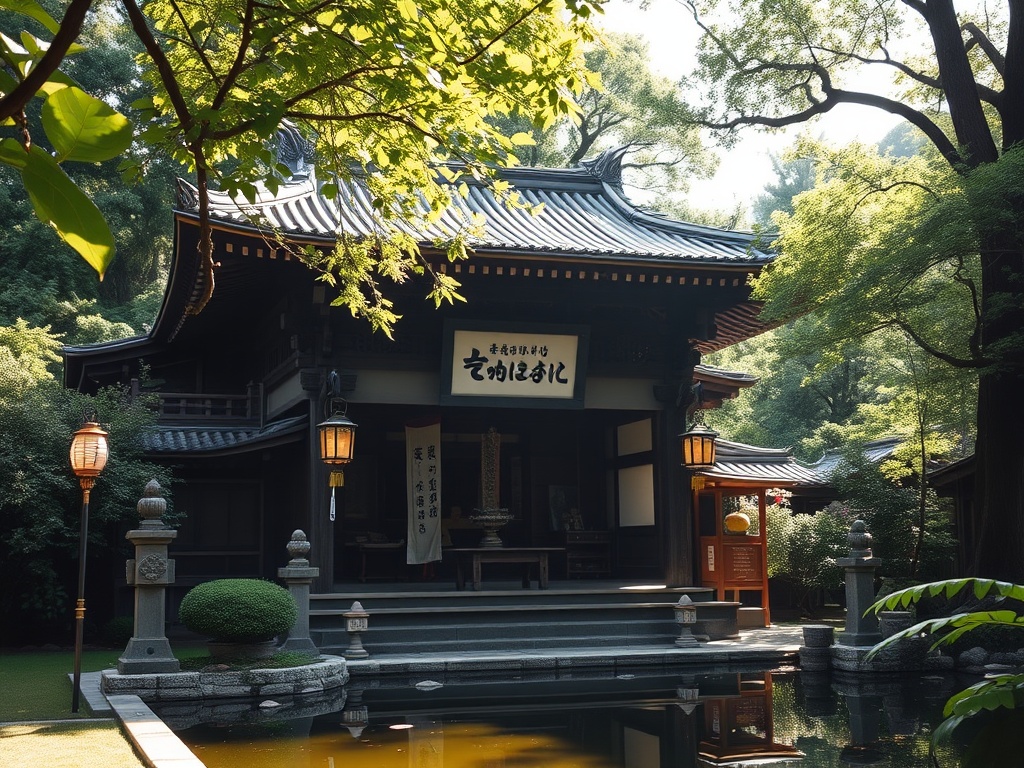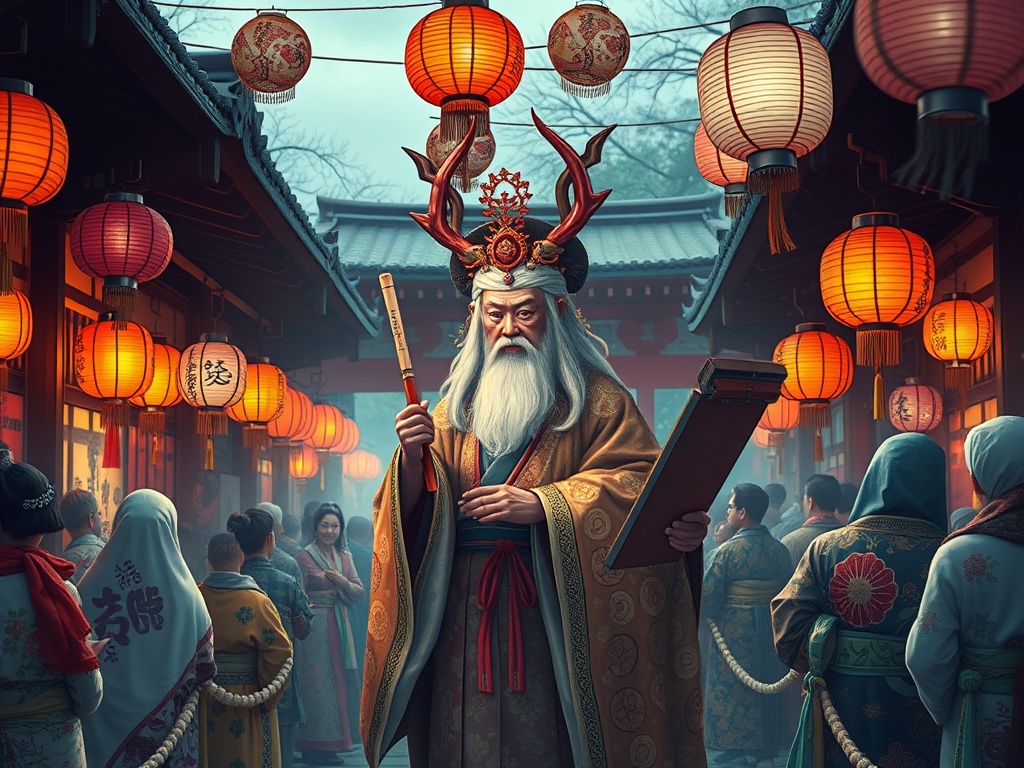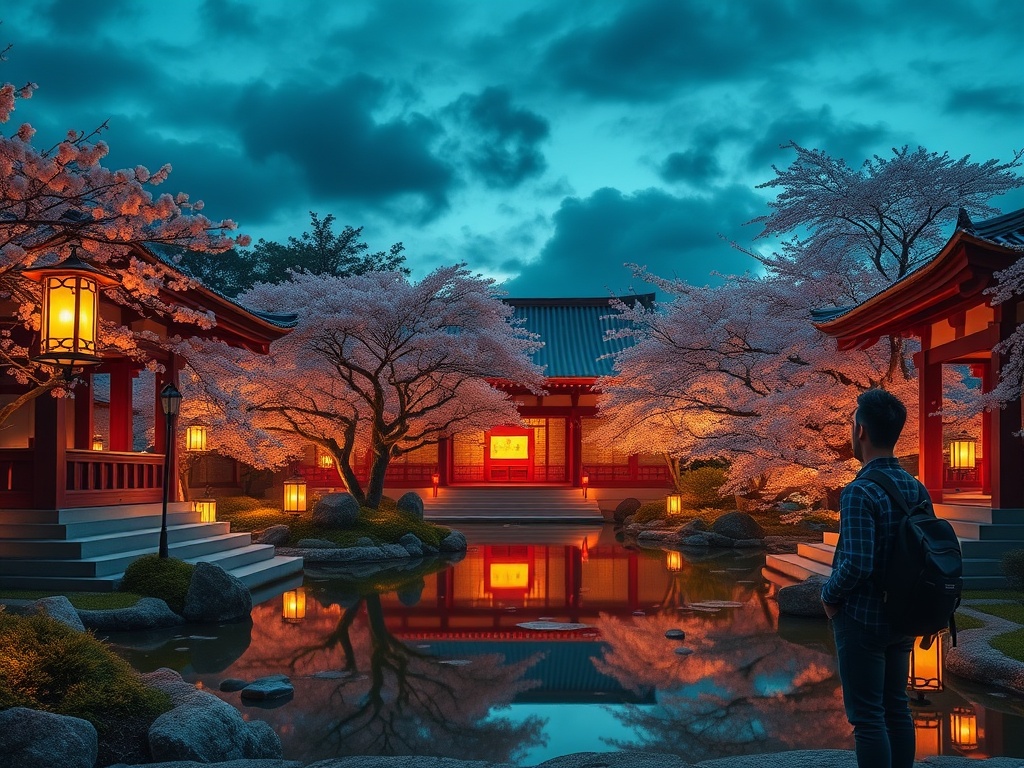Unlocking Ancient Wisdom: The Allure of Omoikane in Shinto Shrines

Embarking on a journey through Japan’s sacred landscapes, travelers often find themselves intrigued by the enigmatic deity, Omoikane. Revered as the god of wisdom and intelligence, Omoikane is a symbol of strategic thinking and profound insight. This deity holds a special place within Shinto shrines, offering a unique window into the spiritual heritage of Japan.
Omoikane is celebrated for his unparalleled wisdom, often depicted as the divine counselor who aids other deities with his thoughtful deliberations. His presence is most notable during the mythic event when he orchestrates the reopening of the cave where the sun goddess, Amaterasu, had hidden. As a traveler, understanding Omoikane’s role can enrich your visit, offering a deeper appreciation of the cultural narratives that shape Shinto beliefs.
For those captivated by Japan’s spiritual tapestry, visiting Shinto shrines dedicated to Omoikane is a must. These sacred sites are not only places of worship but are also living museums, preserving centuries-old traditions and architectural marvels. Each shrine offers a unique glimpse into the rituals and ceremonies that honor Omoikane’s wisdom.
- Yasukuni Shrine: Located in Tokyo, this shrine is a monument to those who sacrificed their lives for Japan. Though controversial, it reflects Omoikane’s influence in strategic matters.
- Izumo Taisha: One of the oldest shrines, known for its grand architecture and deep spiritual significance, where Omoikane’s wisdom is celebrated.
- Ise Grand Shrine: This shrine is the most sacred in Japan, dedicated to the sun goddess Amaterasu, and often associated with her divine advisor, Omoikane.
In the serene environment of Shinto shrines, visitors can witness the embodiment of Omoikane’s wisdom through various symbols and rituals. These practices are a testament to the deep respect for intellect and insight that has persisted throughout Japanese history.
From the solemn purification rites to the intricate kagura dances, each aspect of the shrine experience is infused with meaning. The use of sacred objects, such as mirrors and talismans, often represents Omoikane’s reflective nature, inviting visitors to ponder their own thoughts and actions.
Intellectual Deity of Japan: Omoikane’s Influence on Festivals and Ceremonies
In the vibrant tapestry of Japanese festivals and ceremonies, the influence of Omoikane, the intellectual deity, is profoundly woven. As a traveler, immersing oneself in these cultural celebrations provides an exhilarating glimpse into how wisdom and strategic thought are revered and celebrated across the nation. From grand festivals that light up entire cities to solemn rituals that echo through centuries, the presence of Omoikane is both a guiding force and an embodiment of Japan’s cultural intellect.
Many festivals in Japan are grounded in the principles of wisdom and reflection, aligning closely with the attributes of Omoikane. These celebrations often serve as a tribute to the deity’s ability to guide and inspire thoughtful deliberation and insight. Among the myriad of festivals, some stand out for their direct connection to Omoikane’s legacy.
- Kanda Matsuri: Held in Tokyo, this festival is one of the three great Shinto festivals and is celebrated in honor of the wisdom that has shaped the city’s history and future. The parades and rituals reflect strategic foresight, symbolizing Omoikane’s guidance.
- Gion Matsuri: Known for its magnificent floats, this festival in Kyoto embodies the wisdom of urban planning and community collaboration, echoing the strategic intellect of Omoikane.
Ceremonial practices in Japan often mirror the reflective nature of Omoikane. These ceremonies are not merely religious observances but are profound expressions of cultural respect for intelligence and deliberation. Whether it’s a New Year’s ritual or a harvest celebration, each ceremony is steeped in tradition and reverence for the divine mind.
One can witness this in the Yudate Shinji ritual, where boiling water is used in purification ceremonies. The act of transformation from water to steam signifies the transition from confusion to clarity, a metaphorical nod to Omoikane’s role in providing insight and guidance.
For those who seek to understand the depth of Japanese culture, participating in these festivals and ceremonies offers a unique perspective on how Omoikane’s wisdom continues to influence and enrich the cultural landscape of Japan. Each event is a testament to the enduring legacy of intellect and strategic thought that Omoikane represents.
A Traveler’s Guide to Discovering Omoikane’s Presence in Modern Japan
In the heart of Japan’s bustling cities and tranquil countryside, the ancient wisdom of Omoikane permeates modern life. As travelers embark on their journey through this fascinating country, they are invited to uncover the subtle yet profound ways in which this deity of intellect and insight continues to shape contemporary Japanese culture. Whether through art, architecture, or daily rituals, the essence of Omoikane can be found intertwined with the vibrant tapestry of modern Japan.
Japan’s urban centers are a dynamic blend of tradition and innovation, where the influence of Omoikane can be seen and felt. In Tokyo, for example, the city’s strategic planning and architectural brilliance reflect the foresight and wisdom attributed to this divine figure. Amidst the skyscrapers and neon lights, visitors may discover temples and shrines that serve as peaceful sanctuaries, inviting contemplation and reflection. The Yasukuni Shrine, though often visited for its historical significance, also embodies the strategic insights that are synonymous with Omoikane.
The presence of Omoikane is not confined to religious sites alone. Museums and cultural centers throughout Japan often host exhibitions that highlight the country’s intellectual heritage. These venues provide a platform for understanding how ancient wisdom continues to influence present-day innovations and philosophies.
Beyond the physical landmarks, the spirit of Omoikane permeates everyday life in Japan. The tradition of kintsugi, the art of repairing broken pottery with gold, is a metaphor for Omoikane’s wisdom—transforming imperfections into unique beauty. This philosophy encourages a mindset of resilience and strategic thought, qualities that are revered in Japanese culture.
In the culinary world, the meticulous preparation and presentation of food often reflect a deep respect for balance and harmony, principles that resonate with Omoikane’s teachings. Dining experiences in Japan can offer more than just a meal; they provide an opportunity to engage with the cultural nuances of wisdom and insight that define the nation’s approach to life.
For those who seek to delve deeper into Japan’s intellectual legacy, engaging with local customs and traditions offers a rich understanding of how Omoikane’s influence endures in the fabric of modern society. From participating in a tea ceremony to exploring the intricacies of calligraphy, every experience is a step closer to unraveling the wisdom that has shaped Japan for centuries.
From Myths to Mindfulness: How Omoikane Inspires Thoughtful Travel Experiences
Exploring Japan through the lens of Omoikane worship offers travelers a unique opportunity to delve into the harmonious blend of myth and mindfulness that defines Japanese culture. As the god of wisdom and intelligence, Omoikane’s presence invites visitors to engage not only with the physical beauty of Japan but also with its spiritual and intellectual depths. From bustling urban centers to serene countryside shrines, the journey of discovering Omoikane is as much about introspection as it is about exploration.
Travelers eager to embrace Omoikane’s wisdom are encouraged to embark on mindful pilgrimages to various significant sites across Japan. These journeys are more than mere sightseeing; they are transformative experiences that foster a deeper connection with the self and the cultural essence of the land. As you traverse these sacred spaces, let the serenity of each location guide you towards inner clarity and insight.
- Kumano Kodo: This ancient network of pilgrimage trails in the Kii Peninsula is not only a UNESCO World Heritage site but also a path of spiritual rejuvenation. Walking these trails allows for reflection and meditation, echoing Omoikane’s influence on thoughtful deliberation.
- Mount Koya: The heart of Shingon Buddhism, Mount Koya offers an immersive experience into Japan’s spiritual traditions. Visitors can stay in temple lodgings and participate in meditation sessions, channeling the wisdom of Omoikane in this tranquil setting.
For those seeking a more interactive engagement with Omoikane’s legacy, Japan offers an array of experiences that blend tradition with personal growth. These activities are designed to invite thoughtful participation, encouraging travelers to reflect on their journey and its impact on their perspective.
Consider participating in a traditional tea ceremony, where every movement and gesture is imbued with intention and mindfulness. The art of preparing and enjoying tea mirrors Omoikane’s teachings on patience and introspection. Alternatively, try your hand at calligraphy, a practice that emphasizes the harmony between mind and body, creating a meditative state that aligns with the deity’s wisdom.
For those planning their itinerary, here’s a suggested route that intertwines Omoikane’s wisdom with Japan’s cultural and natural beauty:
| Location | Highlight | Reflection |
|---|---|---|
| Tokyo | Yasukuni Shrine | Contemplate the balance between tradition and modernity. |
| Kyoto | Gion Matsuri | Reflect on the power of community and collaboration. |
| Wakayama | Kumano Kodo Trails | Embrace the journey and find clarity in nature. |
Each step of your journey is an invitation to embrace Omoikane’s wisdom, making travel through Japan not just an adventure, but a profound experience of personal growth and discovery.
Exploring the Symbolism and Artistry of Omoikane in Japanese Temples
In the heart of Japanese temples, the symbolism and artistry surrounding Omoikane reveal a tapestry of cultural narratives that captivate the imagination of travelers. As the god of wisdom and strategic thought, Omoikane’s influence is seamlessly woven into the architecture, art, and rituals of these sacred spaces. Each temple offers a unique perspective on how this revered deity continues to inspire awe and reflection, providing an enriching experience for those eager to delve into Japan’s spiritual heritage.
Japanese temples are not just places of worship; they are masterpieces of artistic expression that embody the ethos of Omoikane. The intricate carvings and sacred murals found within these temples often depict the deity’s legendary role in mythology, particularly his strategic guidance during pivotal events. Such artistic representations serve as both a visual feast and a meditative prompt, inviting visitors to ponder the deeper meanings behind each scene. The craftsmanship reflects the cultural reverence for intellect and insight, echoing Omoikane’s legacy in every brushstroke and chisel mark.
The architecture of Japanese temples is a profound symbol of the wisdom that Omoikane embodies. The harmonious balance of space, symmetry, and natural elements within these structures reflects the deity’s influence on strategic planning and foresight. Each temple is designed to foster a sense of tranquility and contemplation, providing a serene environment where visitors can connect with the divine mind. The placement of gates, halls, and gardens is not arbitrary but a thoughtful manifestation of Omoikane’s teachings, showcasing the fusion of intellect and spirituality that defines Japanese temple architecture.
For travel enthusiasts, exploring the symbolism and artistry of Omoikane in Japanese temples offers a unique journey into the heart of Japan’s cultural and spiritual landscapes. These temples are not merely historical monuments but living testaments to the enduring wisdom of Omoikane, inviting visitors to embark on a path of discovery and reflection that resonates with the essence of Japanese tradition.
Omoikane’s Role in Japanese Storytelling: Legends That Captivate Travelers
Japanese storytelling is a mesmerizing tapestry that intertwines myth, history, and culture, captivating travelers with its depth and richness. Within this narrative tapestry, Omoikane, the deity of wisdom, emerges as a pivotal figure whose stories resonate through the ages. His presence in these legends offers insights into the values and philosophical outlook of Japan, providing a deeper understanding of the cultural psyche. As travelers delve into these tales, they discover a world where wisdom is revered, and every narrative is a journey of enlightenment and reflection.
Omoikane’s influence permeates many Japanese legends, often portrayed as the wise counsel in times of adversity. One of the most famous stories is that of the Sun Goddess Amaterasu, who hid herself in a cave, plunging the world into darkness. It was Omoikane’s strategic counsel that orchestrated her return, showcasing his role as a beacon of clarity and resolution. Such tales are not only engaging but serve as allegories for overcoming challenges through intellect and insight.
- The Tale of the Cave: A captivating story where Omoikane’s wisdom shines as he devises the plan to coax Amaterasu out of hiding.
- The Council of Deities: In various legends, Omoikane is depicted as the central figure in divine councils, guiding other gods with his profound insight.
For travelers, these legends are more than stories; they are cultural bridges that connect the past to the present. Engaging with these tales provides a unique opportunity to explore the philosophical underpinnings of Japanese society, where wisdom and strategic thought are esteemed virtues. As you journey through regions where these stories are told, such as in traditional theater performances or local folklore festivals, the essence of Omoikane’s wisdom comes alive, offering a rich tapestry of cultural experience.
Whether you are watching a Noh performance or listening to a local storyteller, these legends are an invitation to pause, reflect, and appreciate the timeless wisdom that has shaped Japan’s cultural landscape. Embrace these tales as a traveler, and let Omoikane’s stories guide you on a thoughtful exploration of Japan’s heritage.


